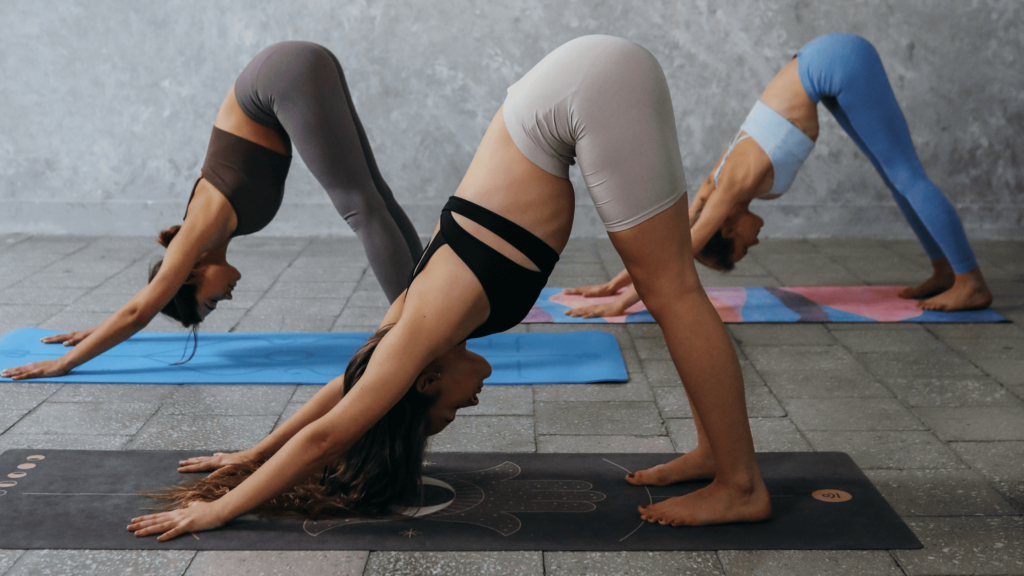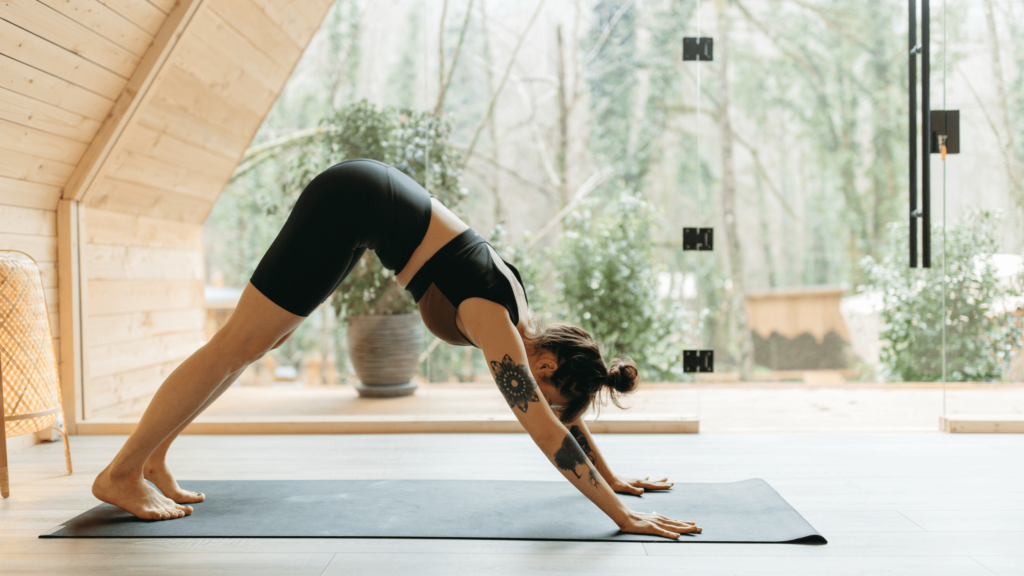In this article, we will explore the fundamentals of Pilates for beginners, including essential tips and techniques to get you started on your Pilates journey.
Pilates offers a unique blend of strength, flexibility, and mindful movement that not only tones your muscles but also enhances your overall health and well-being. Whether you’re looking to improve your posture, increase your core strength, or simply find a way to de-stress, Pilates provides a holistic approach to fitness that benefits both your body and mind.
Table of Contents
What Is Pilates?

Pilates is a low-impact exercise method that focuses on strengthening muscles while improving postural alignment and flexibility. It emphasizes core strength, stability, and controlled movements, making it suitable for people of all fitness levels. Pilates exercises are typically performed on a mat or using specialized equipment such as the Reformer, Cadillac, and Wunda Chair.
History
Pilates was invented in the early 20th century by Joseph Pilates, who was a German physical trainer. Originally called “Contrology,” Pilates designed this exercise system to promote physical and mental health through controlled and precise movements. Joseph Pilates created his method as a form of rehabilitation for injured soldiers during World War I and later refined it for dancers and athletes. In the 1920s, he moved to New York City, where he opened his first studio and began teaching his method to a broader audience. Over the years, Pilates has evolved and gained worldwide popularity, becoming a staple in fitness and rehabilitation programs.
Benefits Of Pilates For Beginners

Physical Benefits: Improved strength, flexibility, and posture.
Pilates for beginners is highly effective in building core strength, which is crucial for maintaining a healthy posture and preventing back pain. The exercises also promote flexibility, particularly in the spine and lower body, helping to reduce stiffness and increase the range of motion. Additionally, Pilates targets multiple muscle groups, ensuring a balanced workout that enhances overall body strength and muscle tone.
Mental Benefits: Enhanced mental clarity, reduced stress, and improved focus.
Pilates for beginners is not just about physical movement; it also emphasizes mindfulness and mental engagement. The focus required to perform each movement with precision can lead to improved concentration and mental clarity. The controlled breathing techniques used in Pilates help reduce stress and promote a sense of calm, making it an excellent practice for mental relaxation and emotional well-being.
Overall Wellness: Better balance, coordination, and overall quality of life.
Pilates helps improve balance and coordination by strengthening the core and enhancing body awareness. This can lead to better movement patterns and reduced risk of injuries. Regular practice of Pilates for beginners contributes to overall wellness by promoting a healthy and active lifestyle, improving energy levels, and boosting the quality of life.
Similar: Pilates Machine Vs. Mat Work: Which Is Right For You?
Getting Started With Pilates

Preparation
Before you begin your Pilates journey, it’s important to prepare adequately. Wear comfortable clothes that allows you to move freely and lets your instructor see your form. You’ll need a good quality yoga mat for cushioning and support. Optional but helpful equipment includes a Pilates ring, resistance bands, and light hand weights. Ensure you have a quiet, spacious area to practice, free from distractions, with enough room to move and stretch comfortably.
Finding a Class
Starting Pilates for beginners with professional guidance can help you learn the correct techniques and prevent injuries. Look for beginner classes at local gyms, Pilates studios, or community centers. If you prefer working out at home, there are numerous online platforms offering beginner Pilates classes. Websites like Pilates Anytime, Glo, and YouTube channels such as Blogilates and Pilatesology offer a variety of classes for all levels.
Starting Slow
As a beginner, it’s crucial to start with foundational exercises to build your strength and understanding of Pilates principles. Focus on mastering basic moves like the Pilates Hundred, roll-ups, and leg circles. Listen to your body and progress at your own pace, gradually incorporating more challenging exercises as you gain confidence and strength. Consistency is key, so aim for regular practice sessions to build your skills steadily.
Suggested: 7 Best Couple Yoga Poses To Strengthen Your Bond
Essential Tips For Beginners

Focus on Form
In Pilates, proper form is crucial to ensure you are targeting the correct muscles and avoiding injury. Pay close attention to your alignment, posture, and the execution of each movement. Engage your core, keep your spine neutral, and avoid straining your neck or back. If you’re unsure about your form, consider taking a few classes with a certified instructor who can provide personalized feedback and corrections.
Breathing Techniques
Breathing is a fundamental aspect of Pilates, helping to oxygenate your muscles and maintain focus. Inhale deeply through your nose to expand your ribs laterally, and exhale through your mouth, engaging your core and drawing your navel towards your spine. This technique, known as lateral or ribcage breathing, enhances your control and performance during exercises. Practice this breathing pattern regularly, even outside of your Pilates sessions, to make it a natural part of your routine.
Consistency Is Key
To reap the full benefits of Pilates, consistency is essential. Aim to practice at least 2-3 times a week, gradually increasing the frequency as you become more comfortable. Regular practice helps build muscle memory, improves your strength and flexibility, and leads to more noticeable progress. Even short sessions can be highly effective if done consistently.
Listen to Your Body
Pilates is designed to be a mindful practice, so it’s important to listen to your body and respect its limits. If you feel pain or excessive discomfort, stop and reassess your form or take a break. Modify exercises as needed, and don’t push yourself beyond your current capabilities. Over time, you’ll develop a better understanding of your body’s signals and how to respond to them, ensuring a safe and effective practice.
Check Out: Pilates Machine Vs. Mat Work: Which Is Right For You?
Basic Pilates for Beginners

Exercise 1: The Hundred
Description
- With your feet flat on the ground and your knees bent, lie on your back.
- Lift your head, neck, and shoulders off the mat, and extend your legs to a tabletop position (90-degree angle at the hips and knees).
- Extend your arms straight by your sides, a few inches off the floor.
- Begin to pump your arms up and down vigorously, inhaling for five counts and exhaling for five counts. Complete 10 sets of breaths for a total of 100 arm pumps.
Benefits
- Core strength
- Endurance
Tips
- Avoid straining your neck; keep your head lifted with the help of your core.
- To prevent arching, keep your lower back firmly into the mat.
Exercise 2: Roll-Up
Description
- With your arms stretched overhead and your legs extended, lie on your back.
- Inhale to prepare, then exhale as you slowly roll up, reaching your arms towards your toes.
- Inhale at the top, then exhale as you slowly roll back down to the starting position, one vertebra at a time.
Benefits
- Flexibility
- Spinal articulation
Tips
- If you find it difficult to roll up smoothly, bend your knees or use a strap around your feet for assistance.
- Move slowly and with control, focusing on articulating through each segment of your spine.
Exercise 3: Leg Circles
Description
- Lie on your back with one leg extended on the mat and the other leg lifted towards the ceiling.
- Keeping your hips stable, circle the lifted leg outward and then around and up to complete one circle.
- Perform 5-10 circles in one direction, then reverse the direction for the same number of circles. Repeat with the other leg.
Benefits
- Hip mobility
- Core stability
Tips
- Keep your hips grounded and still to isolate the movement in your leg.
- Pay more attention to deliberate, fluid movements than rapidity.
Exercise 4: Single Leg Stretch
Description
- Lie on your back with your knees pulled into your chest.
- Raise your shoulders, head, and neck off the mat.
- Extend one leg straight out while holding the other knee into your chest. Legs should be switched, with one leg extended out and the other knee pulled in.
- Continue alternating legs in a controlled manner, using your core to maintain stability.
Benefits
- Core strength
- Coordination
Tips
- Continue to press your lower back onto the mat.
- Coordinate your breath with your movements, exhaling as you switch legs.
Exercise 5: Spine Stretch Forward
Description
- Sit up tall with your legs extended straight in front of you and feet flexed.
- Inhale to prepare, then exhale as you reach forward, drawing your navel to your spine and rounding your back.
- Inhale as you hold the stretch, then exhale as you roll back up to a seated position.
Benefits
- Spinal mobility
- Hamstring flexibility
Tips
- Maintain a neutral spine as you reach forward, avoiding excessive rounding.
- Keep your legs and feet grounded for stability.
Common Mistakes To Avoid
Overexertion
Explanation: It’s natural to want to push yourself to get the most out of your workout, but overexertion, especially in the beginning, can lead to injuries and setbacks.
Tips
- Pay attention to your body and understand its limitations.
- Gradually increase the intensity and duration of your workouts.
- Take breaks when needed and avoid pushing through pain.
Ignoring Form
Explanation: Proper form and alignment are crucial in Pilates to prevent injuries and ensure that you are effectively working the intended muscle groups.
Tips
- Focus on quality over quantity; perform fewer repetitions with correct form.
- Use mirrors or seek guidance from a qualified instructor to check your alignment.
- Throughout every exercise, keep your spine neutral and engage your core.
Inconsistent Practice
Explanation: Regular practice is key to seeing improvement in strength, flexibility, and overall wellness.
Tips
- Set a consistent schedule for your Pilates practice, even if it’s just a few minutes each day.
- Incorporate Pilates into your daily routine to build the habit.
- Monitor your development to keep yourself inspired and to gauge your success.
Tools and Resources of Pilates for Beginners
Apps and Online Platforms:
- Pilates Anytime: Offers a wide range of Pilates classes for all levels.
- Glo: Provides on-demand Pilates classes that you can do at home.
- Daily Burn: Features Pilates workouts as part of their extensive fitness library.
Books and Articles:
- “Pilates’ Return to Life Through Contrology” by Joseph Pilates: A classic guide from the founder of Pilates.
- “The Pilates Bible” by Lynne Robinson: A comprehensive guide to Pilates exercises and techniques.
- Online articles from reputable fitness websites like Verywell Fit and Healthline.
Equipment:
- Yoga Mat: A high-quality mat offers support and cushioning.
- Pilates Ring: Useful for adding resistance to your workouts.
- Resistance Bands: Great for enhancing strength and flexibility.
- Small Exercise Ball: Helps with balance and core exercises.
- Top 10 Best Yoga Mat for Every Practice!
Conclusion
Pilates for beginners is an excellent practice and improves their overall health and fitness. By focusing on proper form, breathing techniques, and consistent practice, you can experience the many physical and mental benefits that Pilates has to offer. Always start out slowly, pay attention to your body, and progressively up the intensity of your workouts.
With dedication and the right resources, Pilates can become a transformative part of your daily routine, enhancing your strength, flexibility, and well-being.





